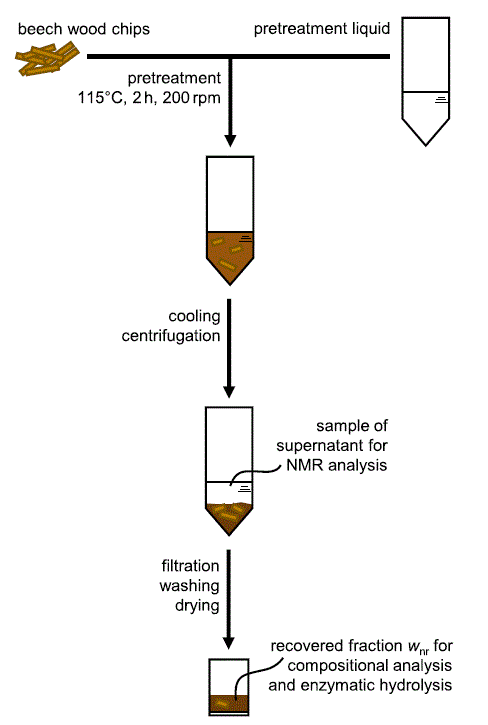254. Acetosolv pretreatment of wood for biorefinery applications
Caroline Marks and Jörn Viell; Biomass Conversion and Biorefinery; (2021); DOI: 10.1007/s13399-021-02023-6 (open access)
The production of biofuels and biochemicals requires a pretreatment to cleave the composite-like structure of lignocellulosic biomass and thus facilitate further conversion. In the case of liquid-based pretreatment, it is important to know which pretreatment liquids allow for an effective conversion of biomass. For the development of effective pretreatment strategies, simple criteria for a fast evaluation of pretreatment results are advantageous. In this study, we use the example of acetosolv pretreatment of beech wood to explore the influence of composition of the employed acetosolv liquids. To this end, we investigate pretreatment phenomena on different scales including macroscopic disintegration, overall mass balances and compositional changes of beech wood. We relate the investigated phenomena with the type and amount of catalyst acid as well as water content of the employed acetosolv liquids. The results show that disintegration increases with both a higher concentration and acidity of the catalyst acid, while excessive disintegration can be balanced by an increased water content up to equimolar ratios of water and acetic acid. Furthermore, an increasing disintegration correlates with an increasing non-recovered fraction up to a maximum of 40 wt%. The non-recovered fraction in turn linearly depends on the amount of removed hemicellulose and lignin. Overall, a low lignin content together with complete disintegration after pretreatment in acetosolv liquids with a high water content allows for increased sugar yields in subsequent enzymatic hydrolysis. Thus, disintegration and non-recovered fraction serve as a simple indicator for a first assessment of pretreatment effectiveness.
